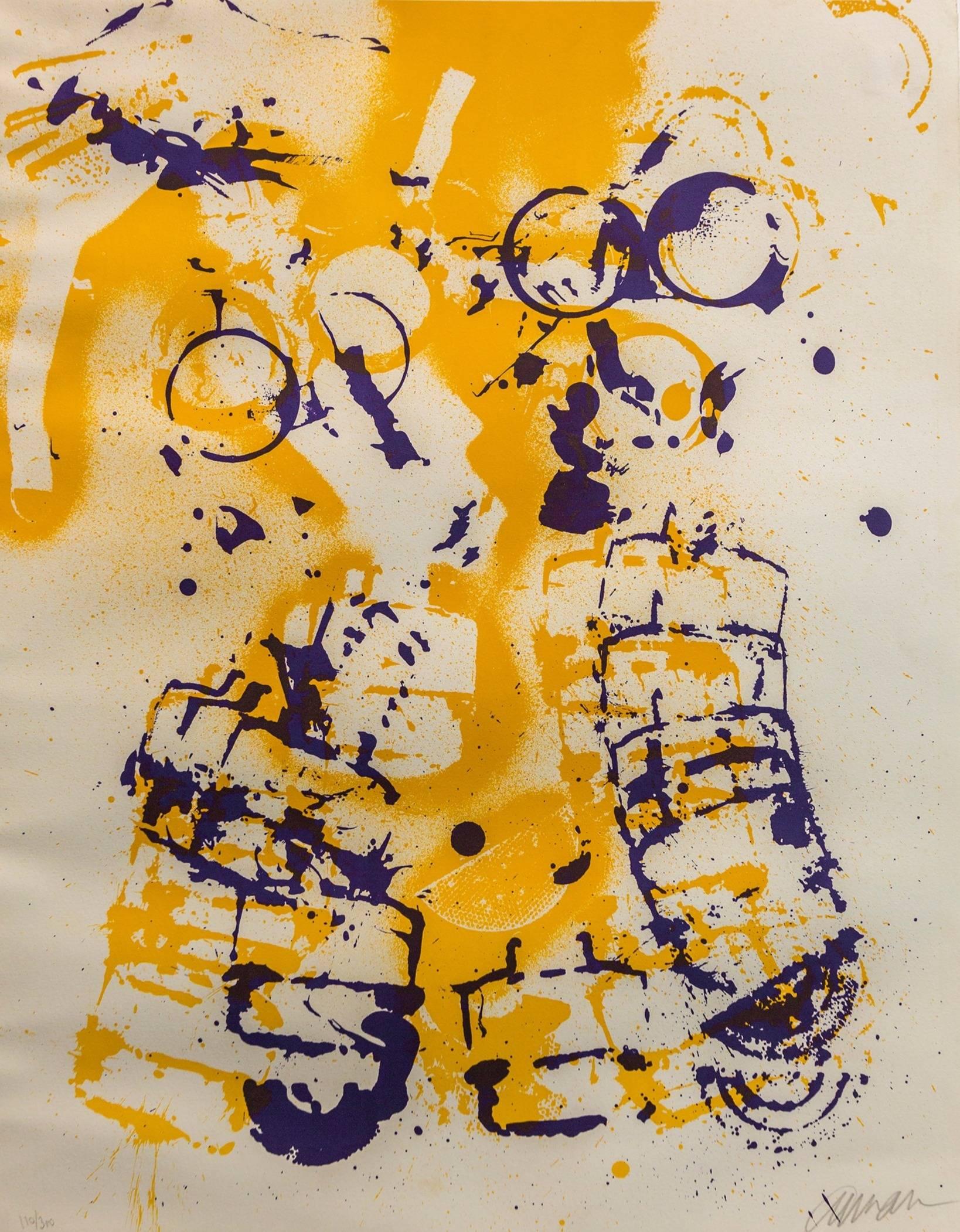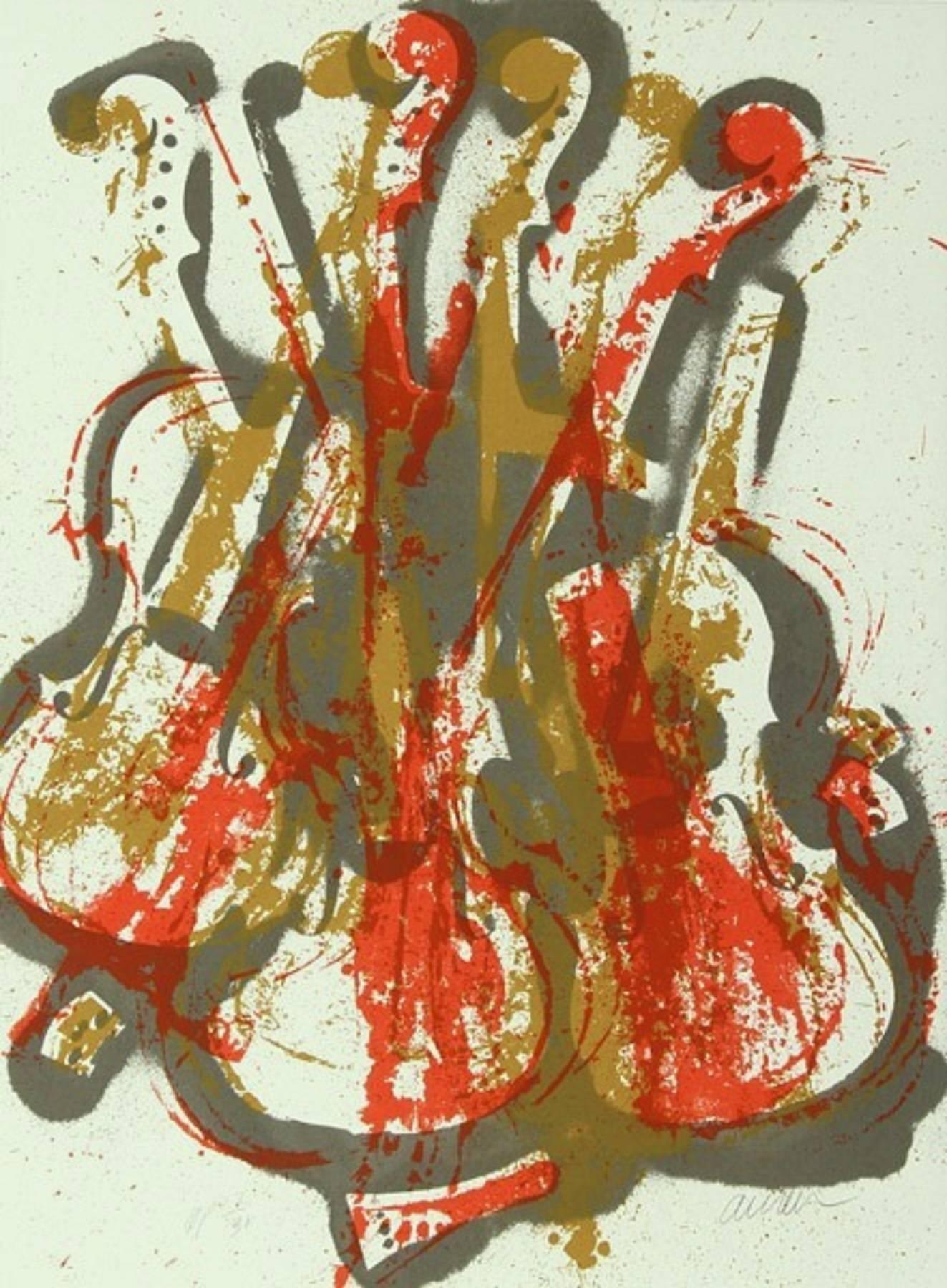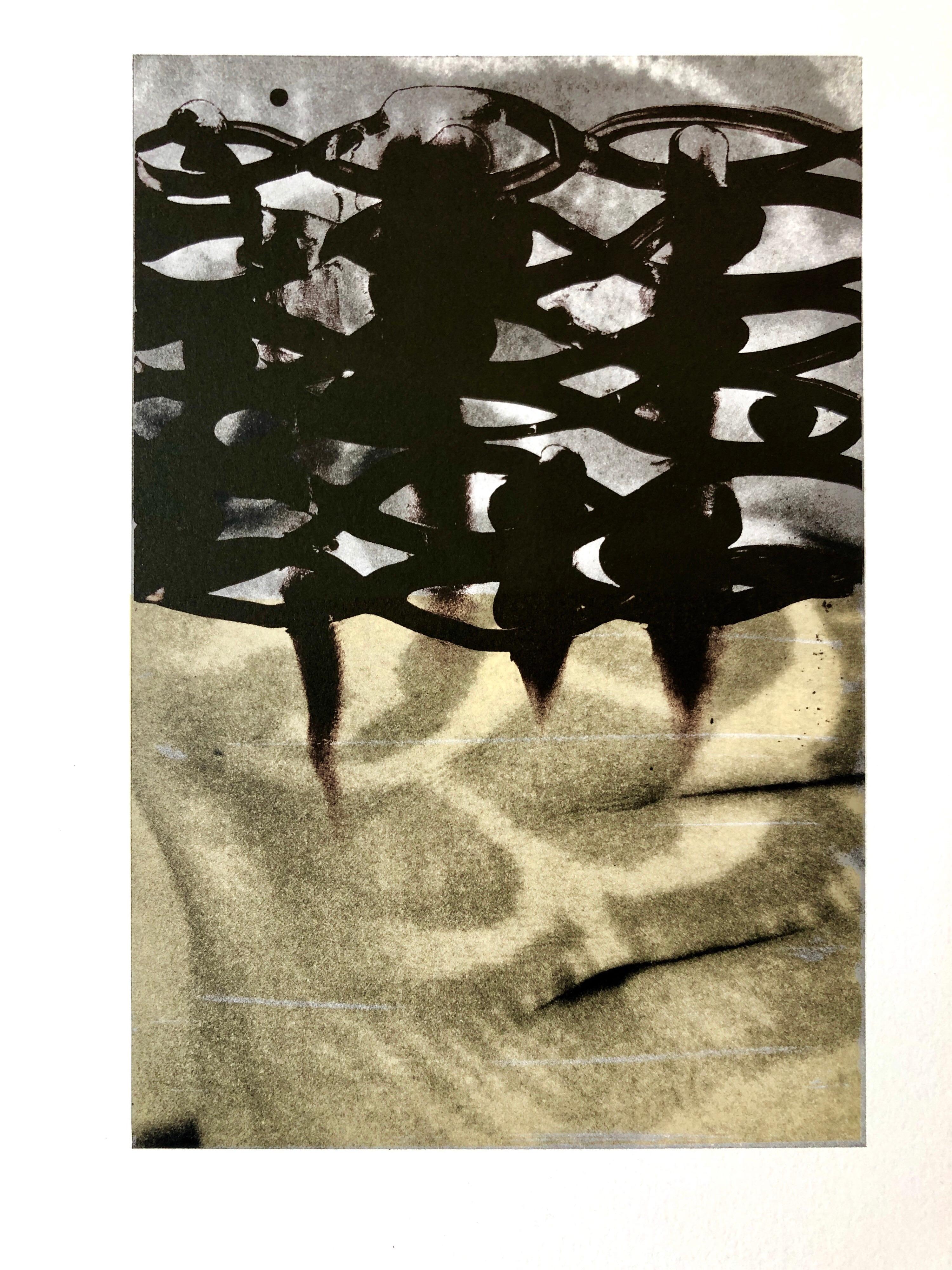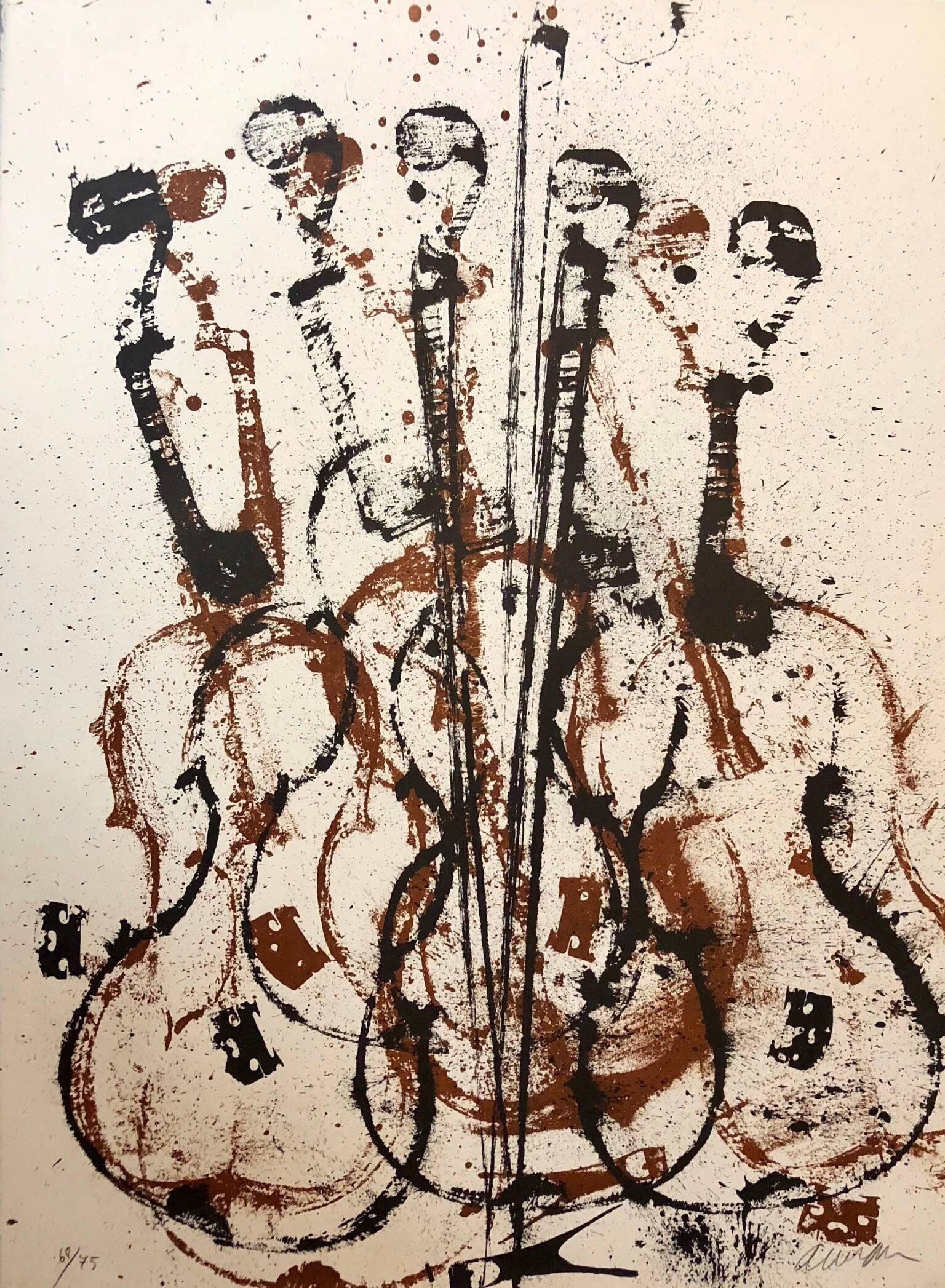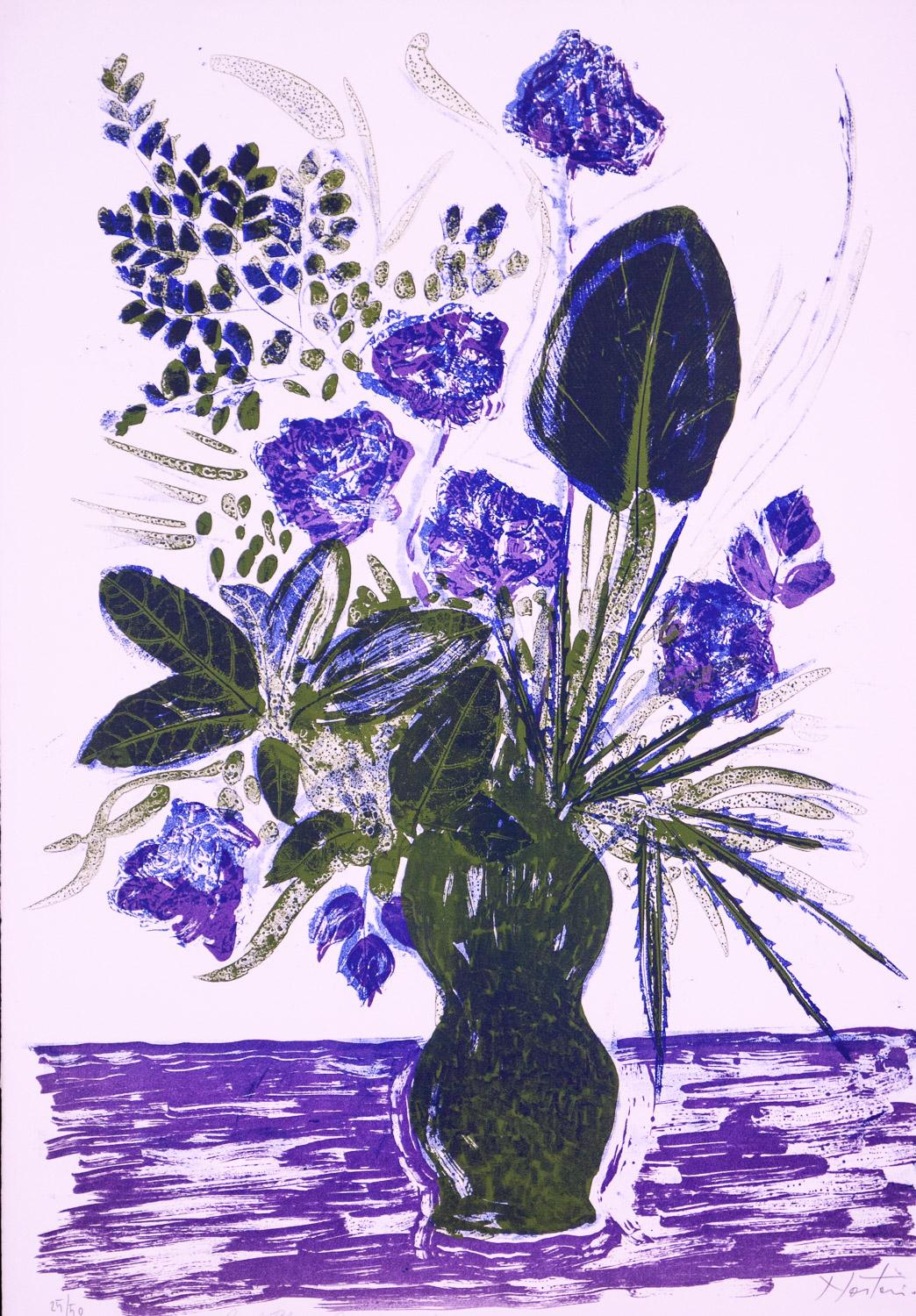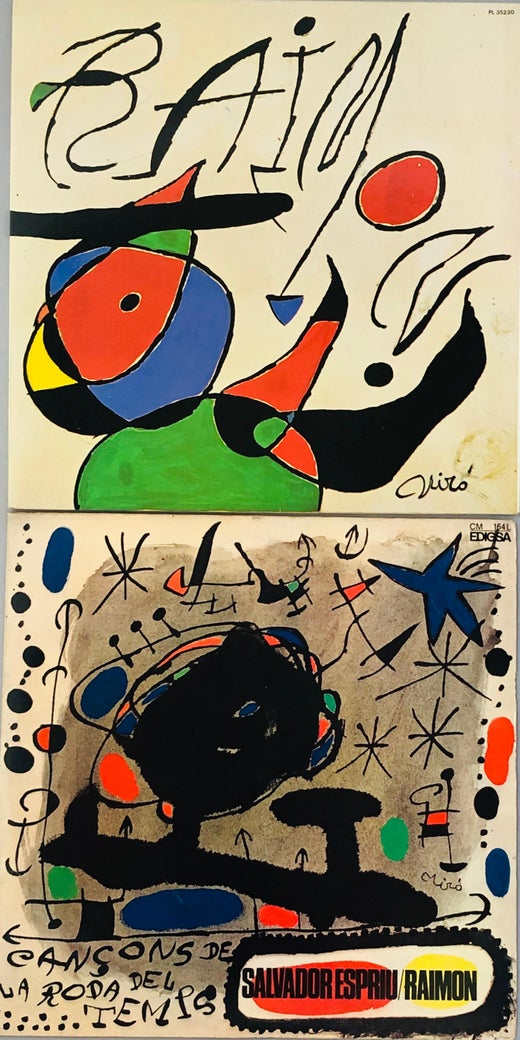Joan MiróJoan Miro - Original Abstract Lithograph1975
1975
About the Item
- Creator:Joan Miró (1893 - 1983, Catalan)
- Creation Year:1975
- Dimensions:Height: 13 in (33.02 cm)Width: 10 in (25.4 cm)Depth: 0.1 in (2.54 mm)
- Medium:
- Movement & Style:
- Period:
- Condition:
- Gallery Location:Collonge Bellerive, Geneve, CH
- Reference Number:1stDibs: LU16123489501
Joan Miró
With his wide-ranging oeuvre, comprising strikingly original paintings, prints, ceramics, sculptures, metal engravings and murals, Catalan modernist Joan Miró was a critical force in moving 20th-century art toward complete abstraction. Although often considered an early Surrealist because of his nonobjective imagery and evocation of the subconscious, he defies neat categorization.
Miró’s identity is largely rooted in the city of his birth: Barcelona. To this day, a number of his public artworks can be found there, including the 72-foot-tall statue Dona i Ocell (Woman and Bird), 1983. Female and avian forms, along with bright colors and the theme of Catalan pride, are recurring elements in his work.
The radical visual world Miró created with his expressive lines, signature symbols and biomorphic shapes influenced such American Abstract Expressionists as Jackson Pollock and Color Field painters like Mark Rothko and Barnett Newman.
Mirò continued to work and experiment until his death at the age of 90 in 1983. Five years before that, he was quoted saying, “I painted these paintings in a frenzy, with real violence so that people will know that I am alive, that I’m breathing, that I still have a few more places to go. I’m heading in new directions.”
Find a collection of original Joan Miró art on 1stDibs.
- ShippingRetrieving quote...Ships From: Collonge Bellerive, Geneve, Switzerland
- Return PolicyA return for this item may be initiated within 7 days of delivery.
- Joan Miro - Original Abstract LithographBy Joan MiróLocated in Collonge Bellerive, Geneve, CHJoan Miro Miro Original Abstract Lithograph Artist: Joan Miro Medium: Original lithograph on Rives vellum Portfolio: Miro Lithographe V Year: 1972 E...Category
1970s Abstract Abstract Prints
MaterialsLithograph
- Joan Miro - Original Abstract LithographBy Joan MiróLocated in Collonge Bellerive, Geneve, CHJoan Miro Miro Original Abstract Lithograph Artist: Joan Miro Medium: Original lithograph on Rives vellum Portfolio: Miro Lithographe II Year: 1975 Editi...Category
1970s Abstract Abstract Prints
MaterialsLithograph
- Colorful Abstract Composition - LithographBy (After) Serge PoliakoffLocated in Collonge Bellerive, Geneve, CH(after) Serge Poliakoff - Colorful Abstract Composition - Lithograph Published in the deluxe art review, XXe Siecle 1958 Dimensions: 32 x 25 cm Publisher: G. di San Lazzaro. Serge ...Category
1950s Abstract Expressionist Abstract Prints
MaterialsLithograph
- Serge Poliakoff - Original Abstract Composition - LithographBy Serge PoliakoffLocated in Collonge Bellerive, Geneve, CHSerge Poliakoff - Colorful Abstract Composition - Lithograph Published in the deluxe art review, XXe Siecle 1961 Dimensions: 32 x 24 cm Publisher: G. di San Lazzaro. Serge Poliakof...Category
1950s Abstract Expressionist Abstract Prints
MaterialsLithograph
- Plate from "XXeme Siecle"By Joan MiróLocated in Collonge Bellerive, Geneve, CHJoan Miro - Moon Bird, Sun Bird printed in a copy of the magazine called "XXeme Siecle" 1961 Dimensions: 32 x 24 cm Publisher: G. di San Lazzaro. Reference:...Category
1960s Abstract Abstract Prints
MaterialsLithograph
- Joan Miro - Original Colorful LithographBy Joan MiróLocated in Collonge Bellerive, Geneve, CHJoan Miro - Moon Bird, Sun Bird - Original Lithograph 1964 From the journal "XXe Siecle" Unsigned edition of unknown size Dimensions: 32 x 24 cm Publisher: G. di San Lazzaro. Refere...Category
1960s Abstract Abstract Prints
MaterialsLithograph
- Le masque à gaz, Gas Mask Hand Signed Lithograph SilkscreenBy ArmanLocated in Surfside, FLLe masque à gaz, 1971, edition of 300. Signed "Arman" in pencil l.r., numbered in pencil l.l. Lithograph in purple and gold on paper, image size 25 3/8 x 19 3/8 in. (64.3 x 49.0 cm),...Category
1970s Abstract Abstract Prints
MaterialsLithograph
- Violent Violin Concerto Hand Signed Lithograph SilkscreenBy ArmanLocated in Surfside, FLArman (November 17, 1928 – October 22, 2005) was a French-born American artist. Born Armand Fernandez in Nice, France, Arman was a painter who moved from using objects for the ink or...Category
1970s Abstract Abstract Prints
MaterialsLithograph
- Set of Eyes, Color Lithograph, Belgian Abstract Expressionist Tamarind PrintBy Dirk de BruyckerLocated in Surfside, FLSigned, dated and titled. Initialed and dated lower right, each numbered 8/20, lower left. 9 x 6 image size, 22 x 15 in. sheet size. With the blindstamp of the Tamarind Institute print...Category
1990s Abstract Expressionist Abstract Prints
MaterialsArchival Paper, Lithograph
- 1940's Abstract Composition Jazz Lithograph Pencil Signed and Dated WPA ArtistBy Konrad CramerLocated in Surfside, FLKonrad Cramer, 1888-1963 was a painter, photographer, printer, and illustrator. Based in the fertile Woodstock, New York, artistic community along with Yasuo Kuniyoshi and Russell Lee, Cramer was both educator and artist. He ran a summer school for miniature camera photography in the 1930s and later taught one of the first American college courses in photography at Bard College. Although he began as a painter of abstract, geometric forms in bold colors, Cramer is most known as a photographer. Konrad Cramer was born and raised in Wurzburg, Germany. Cramer studied to be an artist at the Karlsruhe Academy under Ludwig Schmidt-Reutte and Ernest Schurth. He became interested in the German avant-garde early in his schooling, he was a member of the Blaue Reiter, exposed and encouraged by the experimental works of Wassily Kandinsky and Franz Marc. An additional influence on Cramer's artistic development was the Cubist landscapes of Paul Cézanne. Florence Ballin Cramer opened a gallery on 57th Street in 1919, encouraged by the sculptor Elie Nadelman. Florence Gallery exhibited and sold the works of living artists. Although it only survived briefly, it was the first New York gallery to show works by Yasuo Kuniyoshi, Alexander Brook, Ernest Fiene, and Stefan Hirsch. Cramer then settled with his wife in Woodstock, New York, where Ballin had painted with the Art Students League each summer since 1906. Cramer established a reputation as one of Woodstock's most modern painters with an impressive series of abstract paintings exhibited at the MacDowell Club in 1913. In the 1920s Cramer developed a personal representational style which blended modern and regional influences. Cramer received a Rockefeller grant in 1920 to study educational methods for craftsmen in Germany and France. In 1922 he took a teaching position at the Woodstock School of Painting and helped establish the Woodstock Artists Association, where he served as a director. While teaching and painting, Cramer also applied his artistic talent to illustration and textile design. Konrad Cramer first exhibited at the Whitney Studio Club in 1924 and participated in the Whitney Museum of American Art's first and second biennials in 1933 and 1935. He was also included in the 1935 exhibition Abstract Painting in America at the Whitney. Cramer was later included in the Whitney Museum exhibition Pioneers of Modern Art in America in 1946. In the 1930s Cramer participated in many other museum invitationals, including: the Carnegie International (1929, 1933, 1937, 1938); the Pennsylvania Academy of the Fine Arts (1934, 1936), and the Corcoran Gallery of Art (1935, 1937). In 1934 Konrad Cramer and his wife travelled to Mexico where they produced many paintings and drawings. Back in Woodstock in 1935, Cramer briefly joined the (WPA) Federal Art Project, administering the regional program in Woodstock. In the mid-1930s Cramer took up photography to clarify aesthetic issues in his painting. Cramer had gotten to know Alfred Stieglitz upon his arrival in America in 1911 and wrote an essay about 291 Gallery for Stieglitz's magazine Camera Work in 1914. Through Stieglitz and then in the 1930s fellow Woodstockers like Russell Lee, Cramer became interested in the possibilities of photography and began working with it as an artistic medium. In the 1950s Cramer collaborated on a traveling exhibition and book of abstract photographs with Manuel Komroff...Category
1940s Abstract Abstract Prints
MaterialsLithograph
- Violent Violin Concerto Hand Signed Lithograph SilkscreenBy ArmanLocated in Surfside, FLArman (November 17, 1928 – October 22, 2005) was a French-born American artist. Born Armand Fernandez in Nice, France, Arman was a painter who moved from using objects for the ink or...Category
1970s Abstract Abstract Prints
MaterialsLithograph
- Regal Flower Arrangement original lithograph by Alessandro NastasioBy Alessandro NastasioLocated in Paonia, CORegal Flower Arrangement is an original limited edition( 25/50 ) lithograph by Alessandro Nastasio. A large vase of purple flowers and lots of greenery in set on a purple table and is exploding with color and energy. Alessandro Nastasio was born in Milan in 1934. In 1952 he followed the “free school of the nude” led by Aldo Salvatori. In 1960 he attended the Atelier of Giorgio Upilio where Giacometti, Lam, Fontana, De Chirico worked and where he had the opportunity to study the themes of the inspiring myths. He worked at the MAF foundry with the master Tullio Figini who shared the secrets of the lost wax Renaissance fusion and where he met the masters Crocetti, Manfrini, Manzu , Minguzzi, Fabbri,. He then moved on to Quinto de Stampi at the De Andreis foundry where Marino Marini, Pomodoro, Rudy Wach, Strebelle, Negri and Rosental operated. A regular reader of the great sapienzal texts of antiquity, he trained in particular on the Bible which he illustrated with woodcuts, aquatints, etchings and linocuts, especially the Song of Songs, the book of Ecclesiastes and several pages of the Gospels He also drew his inspiration from the philosophical-religious tradition of the Eastern world through the reading of Rig-Veda, Upanisad and the Matnavi of Rumi. In 1966-67 he obtained the chair at the Academy of Fine Arts of Brera and for thirty years he devoted himself to the teaching of Art Education in various schools. Nastasio created works both pictorial and plastic in collaboration with famous architects such as: Figini and Pollini, De Carli, Gardella, Faranda, Selleri, Ponti. His great talent soon came to the attention of various art dealers: first Max G...Category
20th Century Abstract Impressionist Still-life Prints
MaterialsLithograph
